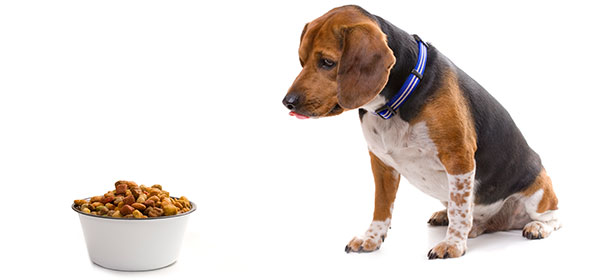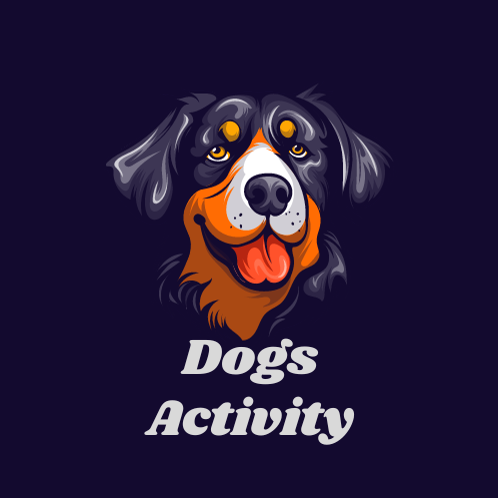
A happy and healthy dog is every pet owner’s aspiration, and one way to ensure your furry friend’s well-being is by choosing the right dog food. In recent years, there has been an increased focus on low fat dog food due to its potential benefits for dogs’ health. In this article, we will explore the significance of low fat dog food, its advantages, and the circumstances in which it can be a valuable choice for your canine companion.
Understanding Low-Fat Dog Food
Low fat dog food is a specialized type of pet food formulated to contain reduced levels of dietary fat. Dietary fat is one of the essential nutrients in a dog’s diet, providing energy, supporting cell growth, and helping the absorption of fat-soluble vitamins. However, excessive fat intake can lead to various health issues in dogs, which is why low fat dog food has become a prominent option for pet owners.
The Importance of Low-Fat Dog Food
- Weight Management
Obesity is a common problem among dogs, often caused by overconsumption of high-fat foods and a sedentary lifestyle. Low fat dog food can help manage your dog’s weight by reducing caloric intake while still providing essential nutrients. By helping dogs maintain a healthy weight, low-fat dog food can contribute to overall well-being and prevent obesity-related health problems.
- Pancreatic Health
The pancreas plays a crucial role in regulating blood sugar levels and digestion, producing enzymes that break down food. A high-fat diet can overwork the pancreas and potentially lead to pancreatitis, a painful and sometimes life-threatening condition. Low-fat dog food eases the strain on the pancreas and reduces the risk of pancreatitis.
- Gastrointestinal Health
Dogs with sensitive stomachs or chronic digestive issues often benefit from low-fat dog food. Reduced dietary fat can lead to fewer incidents of diarrhea, vomiting, and other gastrointestinal discomforts, making mealtime a more pleasant experience for your pet.
- Cardiovascular Health
Just like in humans, a high-fat diet can lead to cardiovascular problems in dogs. Low-fat dog food helps maintain a healthy heart by reducing the risk of conditions like high blood pressure and atherosclerosis. This can lead to a longer and healthier life for your furry friend.
- Joint Health
Excess weight can place strain on a dog’s joints, contributing to conditions like osteoarthritis. Low-fat dog food can help maintain a healthy weight, reducing the risk of joint problems and ensuring your dog remains active and mobile throughout their life.
Choosing the Right Low-Fat Dog Food
When considering low-fat dog food for your canine companion, it’s essential to make informed choices that align with your dog’s specific needs and preferences. Here are some factors to consider:
- Consult Your Veterinarian: Always consult your veterinarian before making significant changes to your dog’s diet. They can provide guidance on the ideal fat content for your dog’s breed, age, and health condition.
- Read Ingredient Labels: Carefully review the ingredient labels on dog food to ensure it meets your pet’s dietary requirements. Look for high-quality protein sources and minimal additives or fillers.
- Consider Your Dog’s Age and Activity Level: Puppies, adult dogs, and senior dogs have different nutritional needs. Make sure to choose a low fat dog food that is appropriate for your dog’s life stage.
- Taste and Texture: Dogs, like humans, have preferences when it comes to taste and texture. Some may prefer dry kibble, while others may favor canned food. Experiment to find the option that your dog enjoys the most.
- Monitor Your Dog’s Response: After transitioning to low fat dog food, monitor your dog’s response closely. Look for changes in their weight, energy level, coat condition, and overall well-being.
- Gradual Transition: When switching to low fat dog food, do so gradually to avoid digestive upset. Mix the new food with the old food over a week or two, increasing the proportion of the new food gradually.
The Importance of Low Fat Dog Food
When it comes to keeping our furry friends healthy and happy, choosing the right food is essential. Just like humans, dogs need a balanced diet to stay fit. One essential aspect is selecting low fat dog food, which plays a crucial role in maintaining your dog’s well-being.
Here’s a simplified breakdown of some low fat dog food options for your beloved canine companion:
| Low-Fat Food Option | Description |
|---|---|
| Chicken | Lean chicken meat is a great low-fat protein source for dogs. It’s easily digestible and provides essential nutrients. |
| Fish | Fish like salmon or whitefish is rich in omega-3 fatty acids, promoting a healthy coat and supporting your dog’s immune system. |
| Vegetables | Incorporating vegetables such as carrots, green beans, or broccoli into your dog’s diet can provide vitamins, minerals, and fiber while being low in fat. |
| Rice | Brown rice is a carbohydrate that can offer energy and fiber without excess fat. It’s gentle on the stomach and easy to digest for dogs. |
| Fruits | Certain fruits like apples, blueberries, or bananas can serve as healthy treats, providing antioxidants and vitamins for your dog. |
These food options can be a part of a balanced diet, but it’s crucial to consult your veterinarian before making any significant changes to your dog’s food routine. The appropriate amount and combination of these foods will vary based on your dog’s size, age, and health condition.
Why Low Fat Dog Food Matters:
- Weight Management: Just like in humans, excessive fat intake can lead to weight gain in dogs. Low-fat food helps maintain a healthy weight and prevents obesity, reducing the risk of related health issues.
- Digestive Health: Some dogs may have sensitive stomachs, and high-fat diets could cause digestive problems. Low-fat food is gentler on their digestive systems.
- Pancreatitis Prevention: Certain dog breeds are prone to pancreatitis, a condition where the pancreas becomes inflamed due to a high-fat diet. Low-fat food can help prevent this condition.
Remember, while these food options are beneficial, they should be a part of a balanced diet plan. Always introduce new foods gradually and monitor your dog’s reaction. Ensuring your dog gets the right nutrition is vital for their overall health and happiness.
The Benefits of Low Fat Dog Food
- Weight Loss and Management
One of the most significant advantages of low fat dog food is its role in weight loss and management. Obesity is a growing concern among dogs, leading to various health issues, including diabetes, joint problems, and heart disease. Low-fat dog food helps dogs shed excess pounds by providing the nutrition they need with fewer calories. This promotes a healthier weight, improved mobility, and an enhanced quality of life.
- Reduced Risk of Pancreatitis
Pancreatitis is a painful and potentially life-threatening condition in which the pancreas becomes inflamed. High-fat diets are a major contributing factor to pancreatitis in dogs. Low fat dog food can help prevent this condition by reducing the amount of fat that the pancreas has to process. This leads to better pancreas health and overall digestive comfort for your pet.
- Improved Gastrointestinal Health
Dogs with sensitive stomachs or chronic gastrointestinal problems often find relief in low fat dog food. High-fat diets can trigger digestive issues, such as diarrhea, vomiting, and bloating. Low fat dog food is easier on the stomach, reducing these discomforts and allowing dogs to enjoy their meals without discomfort.
- Enhanced Cardiovascular Health
High-fat diets can contribute to cardiovascular problems in dogs, including high blood pressure and atherosclerosis. Low fat dog food promotes better heart health by limiting the risk of these conditions. A healthy heart ensures your dog has the vitality and energy to enjoy life to the fullest.
- Support for Joint Health
Excess weight can strain a dog’s joints, increasing the risk of conditions like osteoarthritis. Low fat dog food helps maintain a healthy weight, reducing the pressure on the joints. This contributes to better joint health, increased mobility, and a more active lifestyle for your canine friend.
Common Misconceptions About Low-Fat Dog Food
Despite the benefits, there are some misconceptions surrounding low fat dog food. Let’s address a few of them:
- Low-Fat Means Low-Quality: Some pet owners assume that low fat dog food is inferior in quality. This is not necessarily the case. Many reputable pet food brands offer high-quality, low-fat options that meet all of a dog’s nutritional requirements.
- All Dogs Need Low-Fat Food: Low fat dog food is essential for some dogs, but not all. Dogs with certain health conditions or those prone to obesity benefit the most from low-fat diets. Always consult with your veterinarian to determine if it’s right for your pet.
- Low-Fat Food Lacks Flavor: While low fat dog food may have less fat, it doesn’t mean it lacks flavor. Many brands offer tasty options that dogs love. If your dog is picky, you can experiment with different flavors and textures to find the one they prefer.
- Low-Fat Food Requires Sacrificing Nutrition: Low fat dog food is carefully formulated to provide all the essential nutrients your pet needs. It doesn’t mean you have to sacrifice nutrition for the sake of reduced fat content.
Understanding Low-Fat Dog Food for Pancreatitis
Pancreatitis is a concerning condition in dogs that requires special dietary considerations. Low-fat dog food becomes essential in managing this ailment. Let’s break down the types:
Low-Fat Dog Food for Pancreatitis:
Dogs with pancreatitis benefit from low-fat diets to reduce strain on the pancreas. Specialized commercial low-fat dog food helps control fat intake, easing digestion and preventing flare-ups.
Homemade Low-Fat Dog Food:
Crafting homemade low-fat meals for your pup with guidance from a vet can be beneficial. Ingredients like lean meats (chicken, turkey), rice, and vegetables offer a low-fat, balanced diet.
Best Low-Fat Dog Food:
Consulting a veterinarian aids in selecting the best commercial low-fat dog food for pancreatitis. Look for trusted brands offering specially formulated, easily digestible, and nutritionally balanced options.
High Protein, Low-Fat Dog Food:
Opt for dog foods with high-quality proteins (chicken, fish) and lower fat content, as protein supports muscle health without straining the pancreas.
Dry Low-Fat Dog Food:
Dry low fat dog food comes in kibble form, offering convenience and good dental health. Seek products with low-fat content and essential nutrients.
Read More: How Much Dry Food Should I Feed My Dog
Wet Low-Fat Dog Food:
Wet low fat dog food in cans or pouches provides moisture and palatability. Look for options with low fat dog food and adequate protein to support pancreatic health.
Understanding the importance of low-fat diets for dogs with pancreatitis is crucial. Always consult a veterinarian for tailored dietary recommendations based on your dog’s specific health condition and nutritional needs. This ensures your furry companion receives the best care and nutrition to manage pancreatitis effectively.
Conclusion
Low-fat dog food is a valuable choice for many dogs, providing numerous health benefits, including weight management, improved cardiovascular health, and support for joint health. However, it’s essential to consult your veterinarian before making any dietary changes for your pet. Together, you can determine if low fat dog food is the right option based on your dog’s breed, age, activity level, and health condition.
Frequently Asked Question
Are eggs low-fat for dogs?
Yes, eggs are considered a low-fat protein source for dogs. They contain healthy fats, high-quality protein, vitamins, and minerals beneficial for canine health.
Can I feed my dog chicken and rice every day?
Feeding chicken and rice occasionally can be part of a balanced diet for dogs. However, a consistent diet of only chicken and rice may lack essential nutrients, so it’s best to vary their diet.
What is the best weight loss food for dogs?
Consulting a veterinarian is crucial for choosing appropriate weight loss food for dogs. Specialized weight management diets are available, often containing lower calories and higher fiber to aid weight loss.
What is the fastest way for a dog to lose weight?
Healthy weight loss in dogs requires time and consistency. Quick weight loss methods are not recommended as they can negatively impact a dog’s health. Slow, gradual weight loss through a balanced diet and exercise is ideal.
How long does it take for a dog to lose 2 pounds?
Weight loss duration varies based on a dog’s size, health, and metabolism. Generally, healthy weight loss in dogs occurs at a rate of 1-2% of their body weight per week.
Can a dog lose weight by walking?
Yes, regular exercise like walking helps dogs burn calories, aiding in weight loss. Combine it with a balanced diet to achieve effective and healthy weight management.
Is walking your dog 30 minutes a day good?
A 30-minute walk daily can be beneficial for most dogs, promoting physical and mental well-being. However, the ideal duration may vary based on a dog’s breed, age, and overall health.
What is the best exercise for an overweight dog?
Low-impact exercises like walking, swimming, and controlled play sessions can benefit overweight dogs. Start slowly and gradually increase activity levels under veterinary guidance.
What causes rapid weight gain in dogs?
Rapid weight gain in dogs can stem from overfeeding, lack of exercise, hormonal imbalances, certain health conditions, or medications. Consulting a vet helps identify underlying causes.
Balanced nutrition, regular exercise, and veterinary guidance are key to managing a dog’s weight effectively and ensuring their overall health and happiness. Always consult a veterinarian for personalized advice tailored to your dog’s needs.




Thank you for your articles. I find them very helpful. Could you help me with something?
Thank you for writing this post!